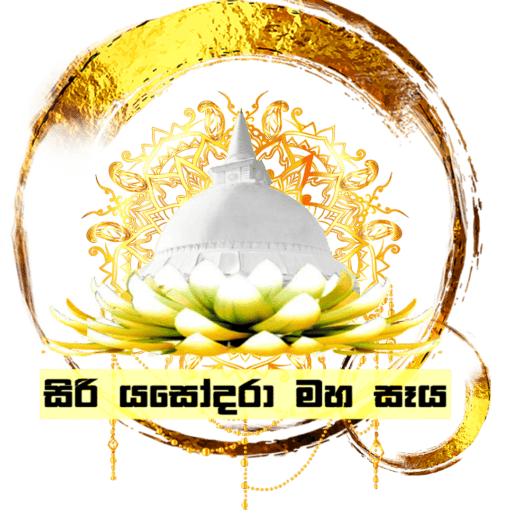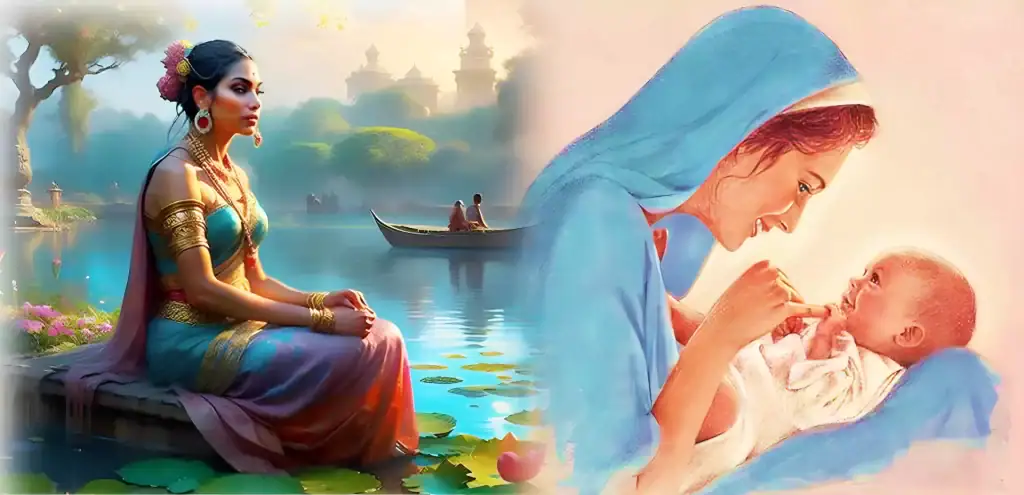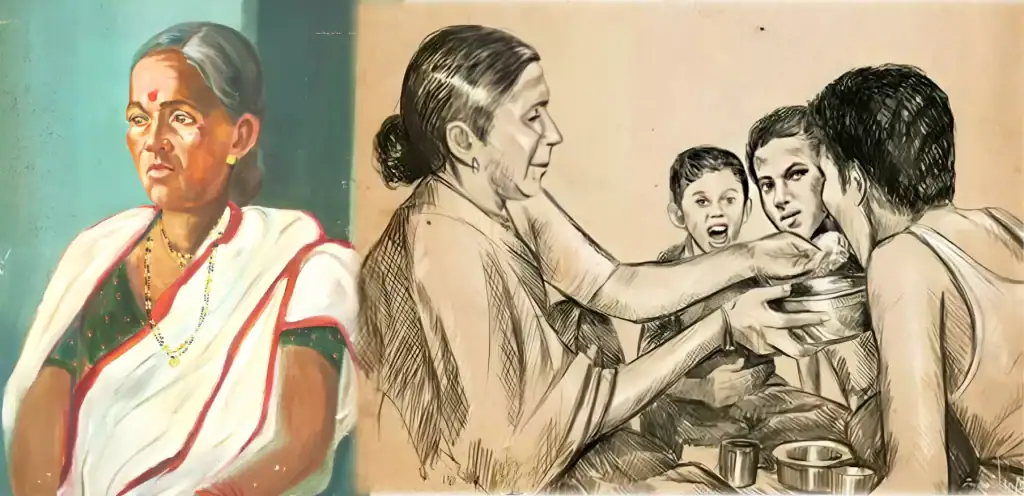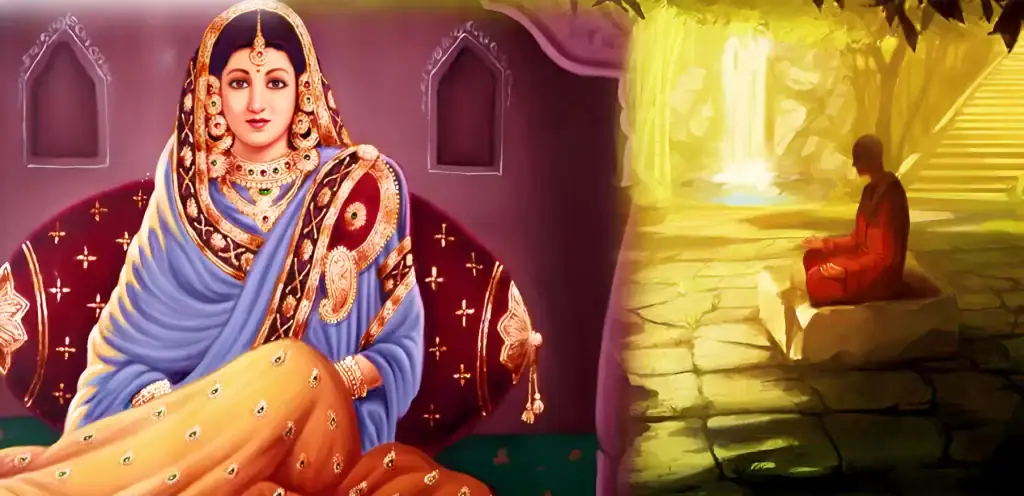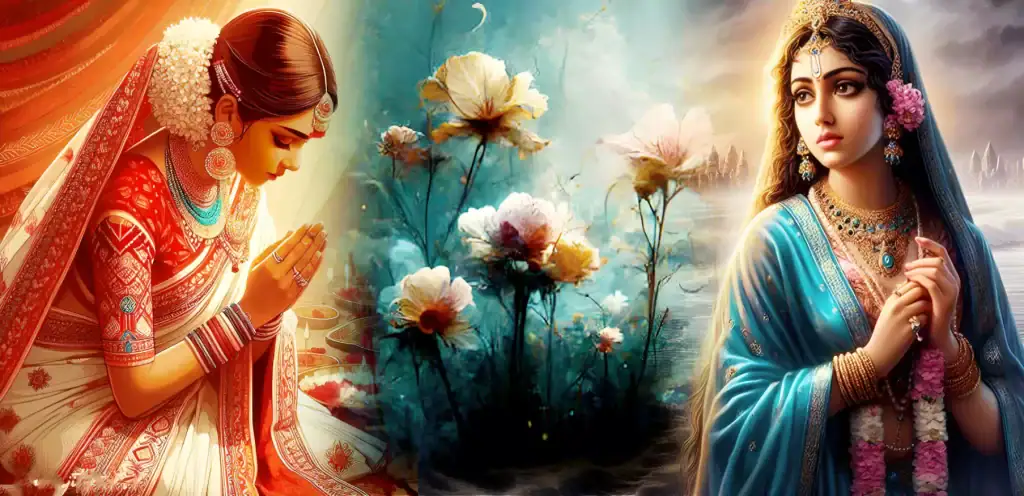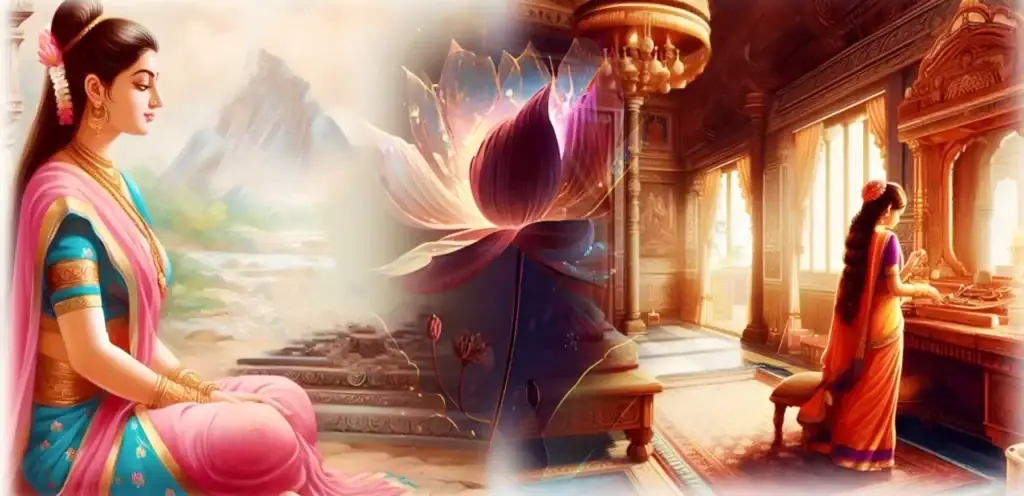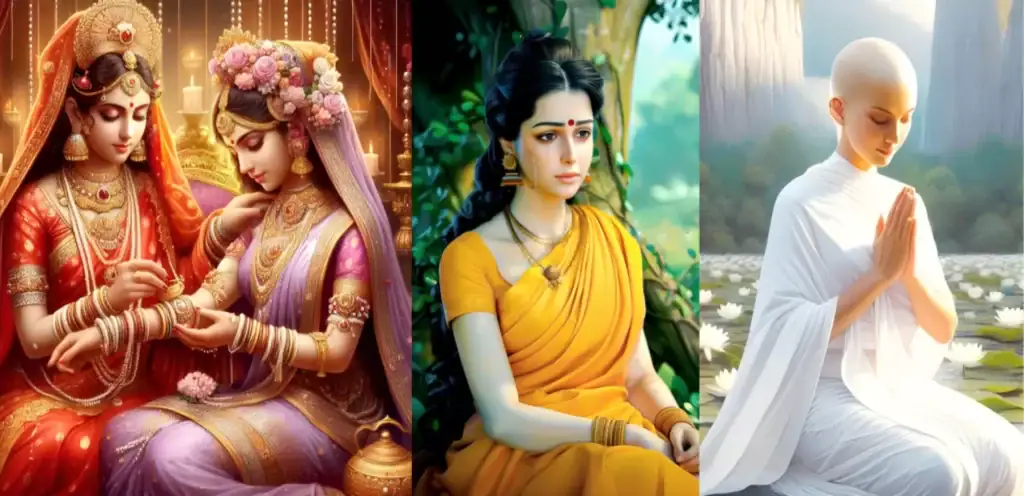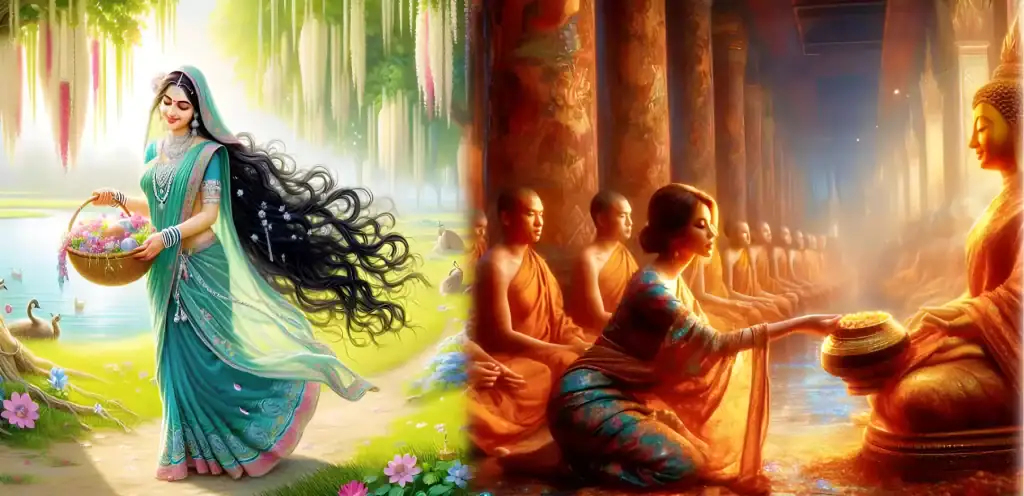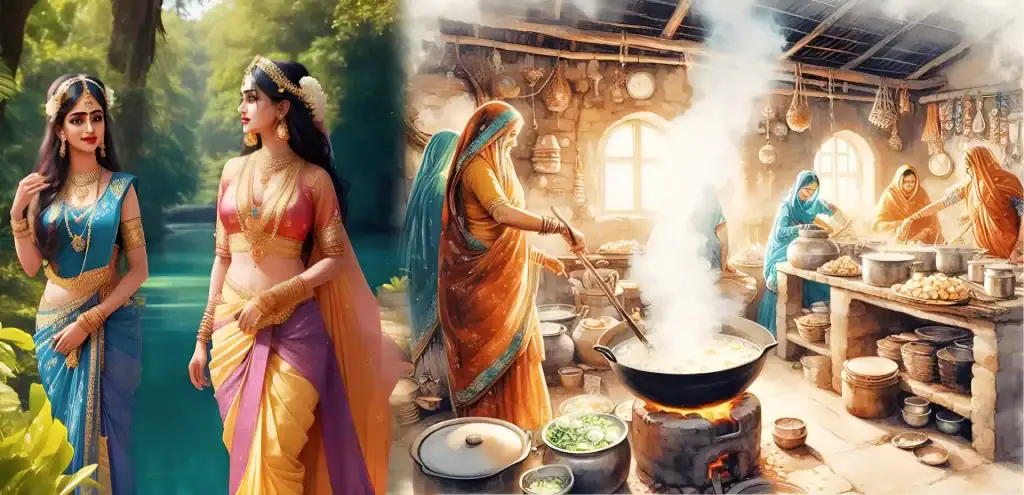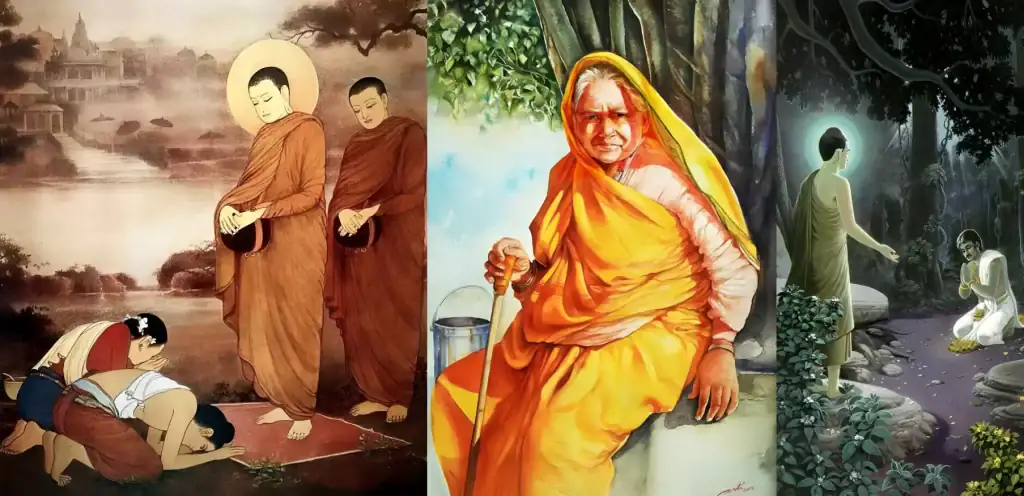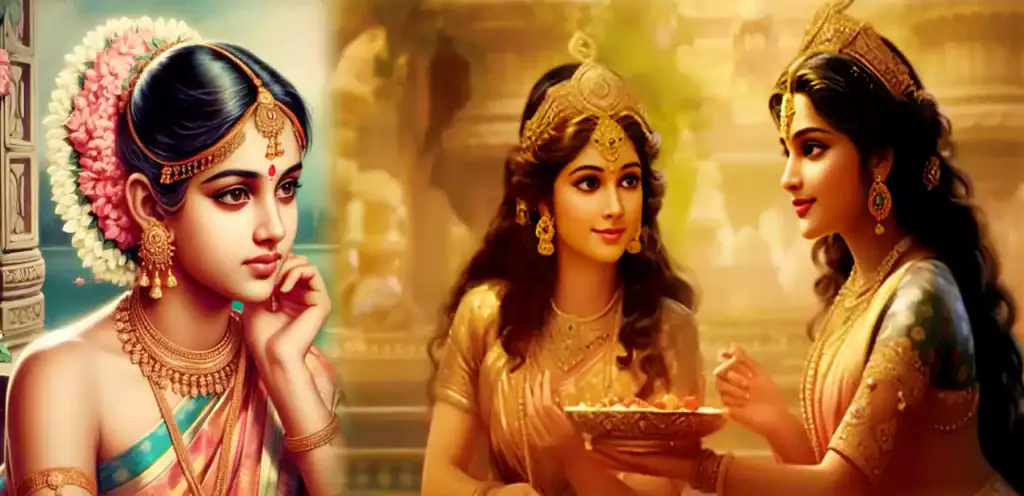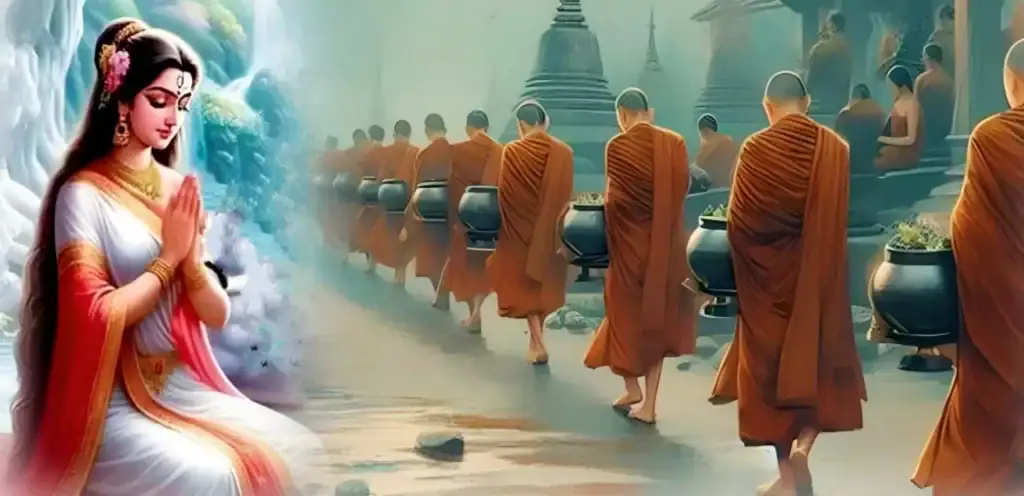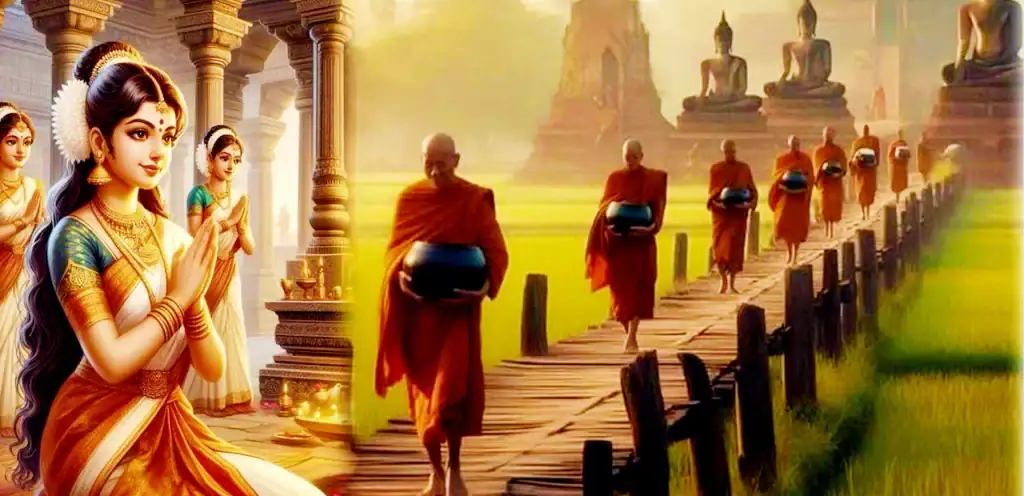Arahant Bhikkhuni Khemā
(Of Great Wisdom)
“Monks, among my nuns with great wisdom, the foremost is Khemā.”
Just as the Buddha has appointed two chief disciples in the order of monks, Sāriputta and Moggallāna, he likewise named two women his foremost disciples in the Bhikkhunī Sangha, the order of nuns. These two were the bhikkhunīs Uppalavaṇṇā and Khemā, the former excelling in psychic power, the latter in wisdom. The Buddha has held up these two as ……
Arahant Bhikkhuni Bhaddā Kuṇḍalakesā
(The Debating Ascetic)
“Monks, among my nuns with swift insight, the foremost is Bhaddā Kuṇḍalakesā.”
In Rājagaha, the capital of the kingdom of Magadha, there lived a girl of good family named Bhaddā, the only daughter of a rich merchant. Her parents kept her confined to the top floor of a seven-story mansion, for she had a passionate nature and they were afraid that her awakening sexuality would lead her into trouble……..
Arahant Bhikkhuni Kisāgotamī
(The Mother with the Dead Child)
“Monks, among my nuns who wear coarse robes, the foremost is Kisāgotamī.”
There lived in Sāvatthī a girl named Gotamī, in poor circumstances, the daughter of an impoverished family. Because she was very thin and haggard (kisā), everyone called her Kisāgotamī, Haggard Gotamī. When one saw her walking around, tall and thin, one could not fathom her inner riches.One might truly say of her: Her beauty was an ……..
Arahant Bhikkhuni Soṇā
(With Many Children)
“Monks, among my nuns who are energetic, the foremost is Soṇā.”
There was a housewife in Sāvatthī who had ten children. She was always occupied with giving birth, with nursing and raising her children, with educating them, and with arranging marriages for them.Her whole life centred upon her children, and she was therefore known as …….
Arahant Bhikkhuni Nandā
(The Buddha’s Half-Sister)
“Monks, among my nuns who practice jhānas, the foremost is Nandā.”
When she was born, Nandā was lovingly welcomed by her parents—the father of the Buddha and his second wife, Mahāpajāpati Gotamī. Her name means joy, contentment, pleasure, and this name was given when parents were especially joyful about the arrival of a baby………
Arahant Bhikkhuni Patācārā
(Preserver of the Vinaya)
“Monks, among my nuns who have memorized the monastic training rules, the foremost is Paṭācārā.”
Patācārā was the beautiful daughter of a very wealthy merchant of Sāvatthī. When she was sixteen years of age, her parents had her confined to the top floor of a seven-story high mansion, where she was surrounded by guards to prevent her from keeping company with young men……..
Arahant Bhikkhuni Ambapālī
Ambapālī’s life was unusual from the very beginning. One day the gardener of a Licchavi ruler in Vesālī found a baby girl lying under a mango tree and gave her the name Ambapālī from amba (mango) and pāli (line, bridge). As she grew up she became ever more beautiful and charming. Several of the Licchavi princes waited to marry, her, which led to much quarrelling and fighting, since each one wanted her for himself. Unable to solve the matter in this way, after lengthy discussions they finally decided that Ambapālī should belong to no one exclusively but to all in common …..
Arahant Bhikkhuni Isidāsī
(A Journey Through Saṃsāra)
In Pāialiputta, which was to become the capital of King Asoka, there lived two Buddhist nuns, Isidāsī and Bodhi, both skilled in contempla- tion, well versed in the Teaching, free from all defilements. One day after they had gone on their alms round and had finished their meal, the two friends sat in the shade, and their conversation drifted towards their personal histories. The older nun, whose name was Bodhi, had appar- ently undergone much suffering before she joined the Order……
The Great Arahant Therī Pajāpati Gotamī
“Monks, among my nuns, the foremost in seniority is Mahāpajāpatī Gotamī.”
During the time of Buddha Padumuttara, Mahāpajāpati Gotamī Therī was born into a wealthy family in the city of Haṃsāvatī, . On one occasion, she was listening to a discourse by the Buddha when she happened to see a bhikkhunī being named by the Buddha as the foremost among the bhikkhunīs who were enlightened earliest (The bhikkhu who is the senior-most in the Order) ….
Khemā Therī
(Of Great Wisdom)
(A comprehensive study)
During the time of Buddha Padumuttara, Khemā Therī was born into a worthy family in the city of Haṃavatī, a hundred thousand world-cycles ago. One day, she listened to the Buddha’s sermon and became a devotee of the Buddha, being established in the Three Refuges. Then she had her parents approval to offer an extraordinary feast to the Buddha and His Sangha. At the end of seven days of the great offering, she saw Sujātā Therī whom the Buddha named as ……
Uppalavaṇṇā Therī
(Of Great Psychic Power)
“Monks, among my nuns with psychic power, the foremost is Uppalavaṇṇā.”
During the time of Buddha Padumuttara, Uppalavaṇṇā (Therī) was born into a wealthy family in the city of Haṃsāvatī. On one occasion, she listened to a discourse by the Buddha in the midst of a big audience, where she saw the Buddha named a bhikkhunī as the foremost bhikkhunī among those endowed with supernormal powers. She aspired to become …..
Dhammadinnā Therī
“Monks, among my nuns who teach the Dhamma well, the foremost is Dhammadinnā.”
During the time of Buddha Padumuttara, She (Dhammadinnā Therī) was born into a poor working class family in the city of Haṃsāvatī. She was wise and virtuous. One day, when the Venerable Sujāta, the Chief Disciple of Buddha Padumuttara, went on his alms-round, she met him in the course of carrying water and personally offered him her share of ……
Sakulā Therī
“Monks, among my nuns with the divine eye, the foremost is Sakulā.”
During the time of Buddha Padumuttara, She (Sakulā Therī) was born into the family of King Ānanda of Haṃsāvatī. She was the half sister of Buddha Padumuttara and was named Princess Nandā.
When she had come of age, she attended the Buddha’s sermon. She saw a bhikkhunī ….
Kuṇḍalakesā Therī
(A comprehensive study)
During the time of Buddha Padumuttara, Kuṇḍalakesā was born into the family of a rich man in the city of Haṃsāvtī. She was listening to the Buddha’s discourse, when she saw Subhā Therī being named as the ‘foremost bhikkhu in attaining Arahatship with the quickest Insight’. She wanted most strongly to be named such a foremost bhikkhunī in future time. After making great offering …..
Bhaddā Kāpilānī Therī
“Monks, among my nuns who recollect past lives, the foremost is Bhaddā Kāpilānī.”
During the time of Padumuttra Buddha, Bhaddākāpilānī was born as the wife of Vedeha, a millionaire of Haṃsavatī. When she was listening to a discourse by the Buddha, she saw a bhikkhunī being named as he ‘foremost bhikkhunī in supernormal power of remembering past existences’. ….
Kisāgotamī Therī
(A comprehensive study)
The future Kisāgotamī Therī was reborn into an unknown family in the city of Haṃsāvatī, during the time of Buddha Padumuttara. When she was listening to a sermon by the Buddha, she saw a bhikkhunī being named as the ‘foremost bhikkhunī in wearing coarse, inferior robes’….
Siṅgalakamātu Therī
“Monks, among my nuns who are strong in faith, the foremost is Siṅgālakamātā.”
The future Siṅgālakamātu Therī was born as the daughter of a court official, during the time of Buddha Padumuttara. She went to the Buddha’s monastery and after listening to His Doctrine…..
Yasodharā Therī
“Monks, among my nuns who have attained great insight, the foremost is Bhaddakaccānā (Yasodharā )”
The relationship between Prince Siddhārtha and Princess Yaśodarā was not an ordinary relationship. It was coming from an extremely long past and was deeply rooted. Although it is not easy to point out….
Female Lay Disciples Of the Buddha
(The Buddha’s Chief Patroness)
“Monks, among my female lay disciples who are donors, the foremost is Visākhā, Migāra’s mother.”
In the city of Bhaddiya in the country of Aṅga there lived a rich man named Meṇḍaka. In an earlier life, in a time of famine, he had given the last provisions belonging to him and his family to a paccekabuddha, a privately enlightened one…….
(The Flower-Girl Queen)
At the time of the Buddha, a daughter was born to the foreman of the guild of garland-makers in Sāvatthī. She was beautiful, clever, and well behaved and a source of joy to her father. Her name was Mallikā.
One day, when she had just turned sixteen, she went to the public flower gardens with her girlfriends, taking three portions of fermented rice along in her basket for ……..
(Embodiment of Loving-Kindness)
“Monks, among my female lay disciples who live with loving kindness, the foremost is Sāmāvatī.”
In the days when India was the fortunate home of an Awakened One, a husband and wife lived within its borders with their only daughter named Sāmāvatī, who was exceedingly beautiful. Their family life was a happy and harmonious one…….
The story of Sirimā, as recorded in the Pāli commentaries, begins with a woman named Uttarā, the daughter of the wealthy merchant Puṇṇa in Rājagaha…….
Both Puṇṇa and Uttarā were followers of the Buddha. A rich merchant named Sumana, who in earlier times had been Puṇṇa’s bene- factor, wished to marry his son to Uttarā. Puṇṇa, however, was unwill- ing to accept the
(Father and Mother Nakula)
“Monks, among my female lay disciples who are trustworthy, the foremost is the householder Nakula’s mother.”
The town called Suṃsumāragiri (Crocodile Hill) was located in the country of the Bhaggas in the Ganges Valley, and it was here that the Blessed One spent one of the forty-five rainy seasons of his ministry. Once, when the Buddha was walking through the streets…….
(the Noble Lady of Senani)
“Monks, among my female lay disciples who went for refuge in the Triple Gem, the first was Sujātā Seniyadhītā.”
Then, Sujātā was born into the family of a rich man in the city of Haṃsāvati, during the time of Buddha Padumuttara. On one occasion, as she was listening to a sermon by the Buddha, she saw a female lay disciple being named by the Buddha as the foremost in getting established in the Three Refuges. She aspired to that distinction……
“Monks, among my female lay disciples who are very learned, the foremost is Khujjuttarā.”
(A comprehensive study)
Once, Khujjuttarā and Sāmāvatī were reborn into the families of rich men in the city of Haṃsāvatī, during the time of Buddha Padumuttara. As they went to the Buddha’s monastery to listen to a sermon given by the Buddha, Khujjuttarā saw a female lay disciple being named by Him as the foremost among female lay disciples in learning. She had a strong desire to become one herself …..
“Monks, among my female lay disciples who practice jhānas, the foremost is Uttarānandamātā.”
(A comprehensive study)
During the time of the Buddha, she was born to a slave’s family in Rājagaha, as the daughter of Puṇṇa, who were household servants to Sumana the householder in Rājagaha.
It was a festive occasion in Rājagaha on account of the auspicious day, according to the planets. Sumana the householder of Rājagaha called Puṇṇa and said …..
( the Koliyan)
“Monks, among my female lay disciples who give delicious things, the foremost is Suppavāsā Koliyadhītā.”
During the time of Buddha Padumuttara, Suppavāsā was reborn into a wealthy family in the city of Haṃsāvatī. While she was listening to a sermon of the Buddha, she saw a certain female lay disciple being named by the Buddha as the foremost in offering superior articles. She thus had a strong desire to become …..
“Monks, among my female lay disciples who care for the sick monks, the foremost is the laywoman Suppiyā.”
During the time of Buddha Padumuttara, Suppiyā was reborn into a wealthy family in the city of Haṃsāvati. On one occasion, while listening to a sermon by the Buddha, she saw a certain female lay disciple being named as the ‘foremost in looking after a sick bhikkhu in an exceptional way’….
“Monks, among my female lay disciples who have unshakable confidence, the foremost is Kātiyānī.”
During the time of the Buddha Padumuttara, Kātiyāni was born into a rich man’s family in the city of Haṃsāvatī, . She saw a certain female lay disciple being named as the ‘foremost in unshakable conviction in the Teaching’. She emulated that female lay disciple. After making extraordinary offerings….
(the Female Disciple of Kuraraghara)
“Monks, among my female lay disciples whose confidence is based on listening to Dhamma, the foremost is the laywoman Kāḷī of Kuraraghara.”
During the time of the Buddha Padumuttara, Kālī was born into the family of a Rich Man in the city of Haṃsāvathī. While listening to a sermon by the Buddha, she saw a female lay disciple being named by Him as the ‘foremost in devotion to the Buddhas….
(Donor of Pubbārāma Monastery)
(A comprehensive study)
During the time of Buddha Padumuttara, Visākhā was reborn into a rich man’s family in the city of Haṃsāvatī. On one occasion, when she was listening to a discourse by the Buddha, she saw a female lay disciple being named by Him as the ‘foremost in giving in charity’. She aspired to that distinction. After making an extraordinary offering, she …..
(and her Father-in-Law: UGGA)
While the Buddha was residing at Jetavana in the good city of Sāvatthi, he gave a sermon beginning with “Dūresanto pakāsenti” in connection with the merchant Anāthapiṇḍika’s daughter, Cūlasubhaddā. The details were as follows ….
